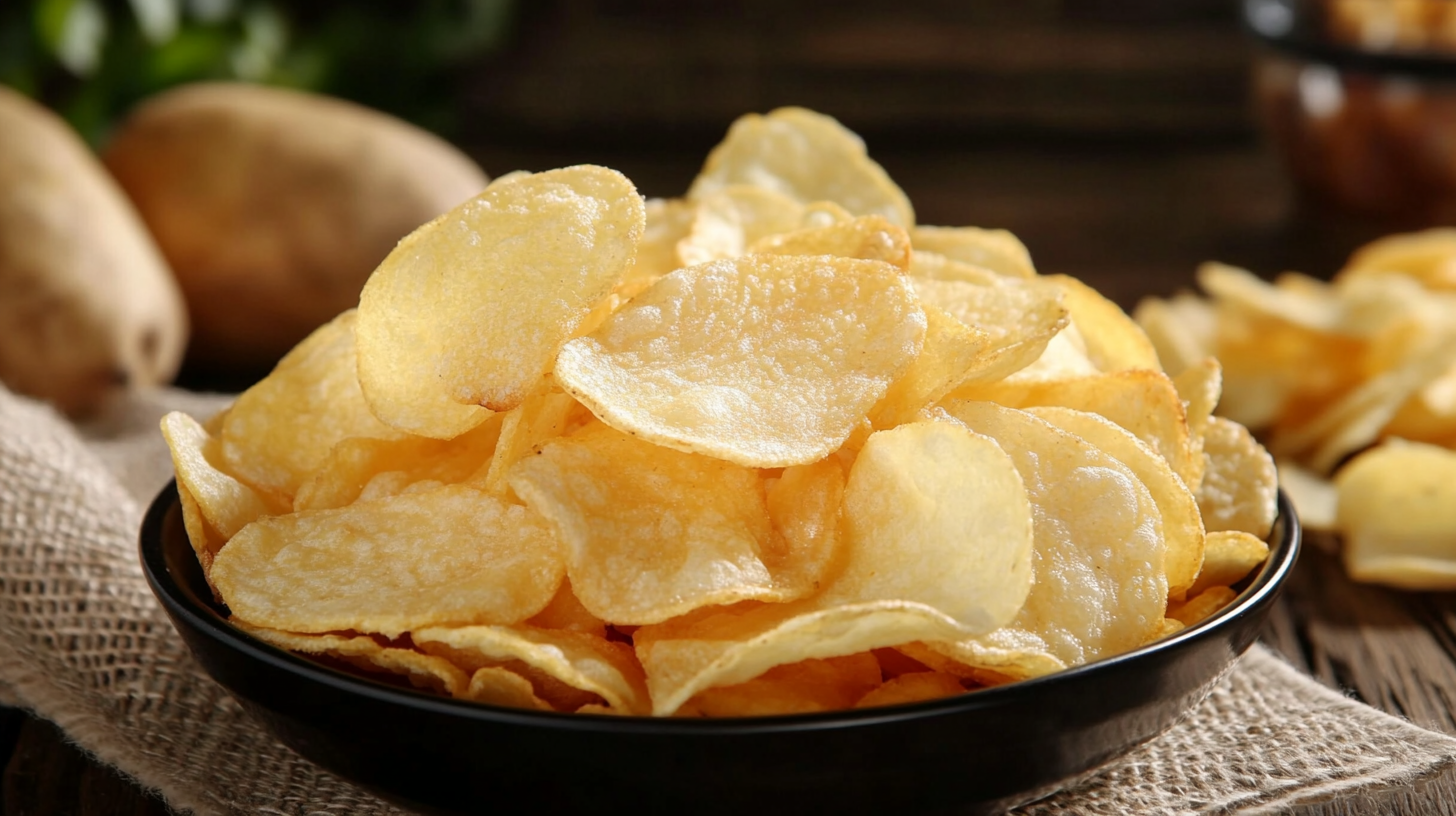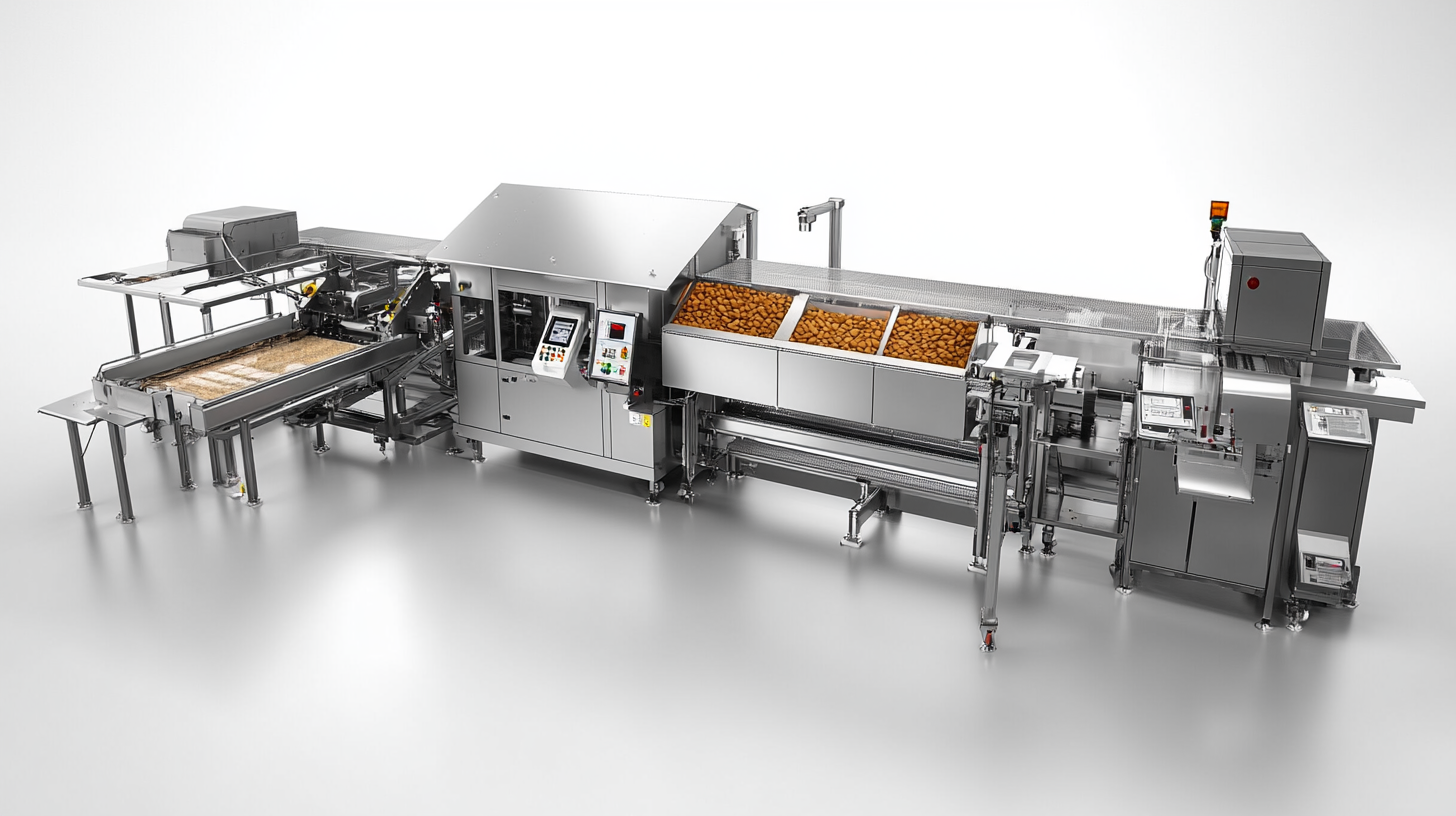
The global snack food industry has been witnessing a remarkable surge, with the potato chips market projected to reach USD 45.5 billion by 2025, according to a recent market research report by Mordor Intelligence. The demand for high-quality, conveniently packaged potato chips is driving advancements in technology and production efficiency within the sector. A core component of this evolution is the Potato Chips Packing Machine, which plays a pivotal role in ensuring product freshness, extending shelf-life, and enhancing consumer appeal. As companies strive to meet consumer expectations for quality and sustainability, understanding the essential standards for these packing machines becomes crucial. These standards are not only vital for compliance and safety but also for optimizing production processes in an increasingly competitive landscape. Hence, a thorough grasp of the latest trends and specifications pertaining to Potato Chips Packing Machines is essential for manufacturers aiming to succeed in global markets.

When it comes to potato chips packaging machines, several key features are essential for ensuring optimal performance in today's competitive global markets. One of the primary features is accuracy in measurement and filling. High-precision scales enable machines to ensure that each bag contains the correct amount of product, minimizing waste and ensuring customer satisfaction. This not only streamlines production but also upholds brand integrity by delivering consistent quality.
Another crucial aspect is versatility in packaging options. Machines that can handle various bag sizes, materials, and sealing methods allow manufacturers to adapt quickly to changing market demands. Features such as adjustable conveyors and user-friendly interfaces enhance operational efficiency, making it easier for operators to switch between different types of bags or products with minimal downtime. Additionally, incorporating automation and integration with other production lines can lead to better workflow management, resulting in faster processing times and increased overall productivity.
Lastly, durability and ease of maintenance are important attributes. Machines constructed with high-quality materials are less prone to breakdowns, leading to extended operational lifespans. Regular maintenance features, such as easy-access panels for cleaning and troubleshooting, ensure consistent performance and reduce operational costs over time. By focusing on these essential features, manufacturers can enhance their packaging processes and remain competitive in the global marketplace.
| Feature | Description | Importance | Standard Compliance |
|---|---|---|---|
| Material Handling | Efficient transport and feeding of potato chips during packing. | Ensures product integrity and reduces waste. | ISO 9001 |
| Sealing Technology | Advanced sealing methods to maintain freshness. | Critical for shelf life and customer satisfaction. | FDA Compliance |
| Speed and Efficiency | High throughput for competitive production rates. | Maximizes productivity and reduces operational costs. | CE Marking |
| User-Friendly Interface | Intuitive controls for easy operation. | Enhances efficiency and reduces training time. | UL Certification |
| Maintenance and Support | Ease of maintenance and availability of support. | Critical for long-term operation and reliability. | ISO 14001 |
In the competitive landscape of the global snack industry, adherence to regulatory standards for potato chips packaging is crucial for manufacturers. According to a report by Grand View Research, the global snack food packaging market is expected to reach USD 47.5 billion by 2025, driven by consumer demand for convenient and safe packaging solutions. Various regulatory bodies, including the U.S. Food and Drug Administration (FDA) and the European Food Safety Authority (EFSA), dictate stringent guidelines to ensure food safety. These standards encompass materials used in packaging, labeling accuracy, and overall product safety, all of which directly influence market access and consumer trust.
Moreover, environmental regulations are becoming increasingly impactful. The rise of the circular economy and sustainable packaging practices are prompting brands to adopt eco-friendly materials. A study by Smithers Pira highlights that the recyclable packaging market is set to grow by 5.4% annually, driven by legislative mandates and consumer preference for sustainable products. Compliance with these standards not only helps in avoiding legal pitfalls but also positions brands favorably in a market where eco-consciousness is paramount. Therefore, understanding and adapting to these global regulatory standards is essential for businesses looking to thrive in the potato chips sector.
The pie chart above illustrates the market share of various regulatory standards impacting potato chips packaging globally. The largest segment represents FDA regulations, followed by EU packaging standards, ISO certifications, and local compliance standards.
Technological innovations are driving remarkable advancements in potato chips packing machinery, transforming the efficiency and effectiveness of production lines globally. Modern packing machines are no longer just equipment; they are sophisticated systems that integrate cutting-edge technologies such as artificial intelligence and robotics. These innovations enhance not only the speed of processing but also ensure consistent quality and minimized waste, catering to the diverse demands of consumer markets.
Moreover, as the semiconductor industry evolves, so does its impact on packing technologies. The end of Moore's law suggests that while the pace of traditional semiconductor advancements may slow, new methods and materials will continue to emerge, enabling better performance and energy efficiency in packing machinery. This evolution allows manufacturers to develop smarter machines that can adapt to real-time data, optimize packing processes, and ensure the freshness of potato chips during packaging. As a result, businesses can meet high standards in the global market, positioning themselves for continued success amidst changing technological landscapes.

The potato processing market has been experiencing notable shifts, heavily influencing potato chips packaging requirements across global landscapes. With rising consumer awareness regarding sustainable packaging, manufacturers are now leaning towards eco-friendly materials that not only preserve product freshness but also minimize environmental impact. Biodegradable films and recyclable options are becoming increasingly popular, addressing both consumer preferences and regulatory pressures.
Moreover, the demand for convenience has surged, dictating trends in portion control and resealable packaging designs. As snack consumption on-the-go rises, companies are innovating to provide flexible packaging solutions that accommodate varying consumption habits. These trends underscore the importance of adaptability in packing machines, which must integrate advanced technology for efficient, high-speed production while ensuring compliance with evolving market standards. This synergy between consumer demands, sustainability, and technological advancement is reshaping the landscape of potato chips packaging and will continue to do so in the foreseeable future.

When selecting potato chips packing equipment for different global markets, it is essential to align with local standards and consumer preferences. According to recent industry reports, the setup of a potato chips manufacturing plant can vary significantly in cost depending on the region, which impacts the choice of packing machinery. For instance, while an entry-level setup may require an investment of approximately $200,000, fully automated lines in developed markets might exceed $1 million, factoring in advanced technologies that enhance efficiency and quality.
Furthermore, best practices in equipment selection necessitate an understanding of the specific packaging requirements. Markets with a greater emphasis on sustainability are leaning towards eco-friendly packaging solutions, often requiring modifications in machinery. Reports have indicated a rising demand for machines that cater to both traditional and innovative packaging formats, ensuring brands can meet varying consumer expectations across markets. By carefully considering these factors, manufacturers can optimize their operations and gain a competitive edge in the swiftly evolving potato chip industry.
This bar chart represents the market demand (units sold) for potato chips packing machines across different global markets. North America shows the highest demand, followed by Europe and Asia.